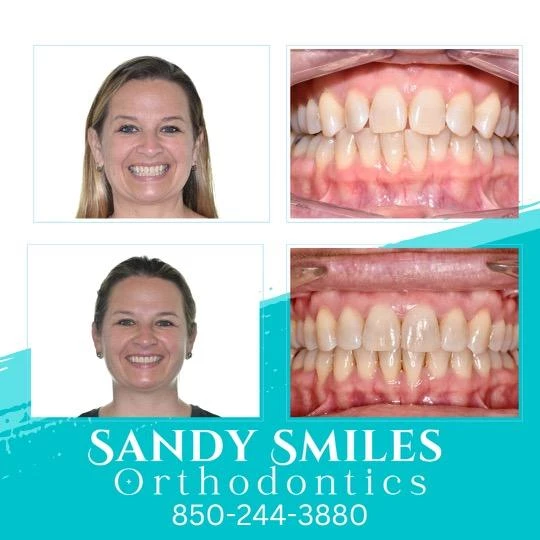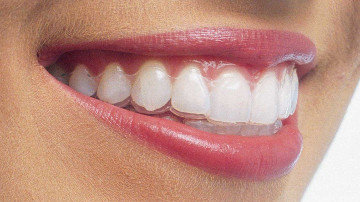The Ultimate Contrast: Invisalign vs. Traditional Braces for Grownups
The Ultimate Contrast: Invisalign vs. Traditional Braces for Grownups
Blog Article
Invisalign vs. Conventional Dental braces: Which Alternative Is Right for You?
When considering orthodontic therapy, the selection between Invisalign and standard dental braces provides several important variables that warrant mindful analysis. Invisalign provides a discreet choice with detachable aligners, while traditional braces offer a much more noticeable yet reliable option for severe misalignment.
Overview of Therapy Alternatives

In comparison, typical dental braces include metal braces and cables that are adhered to the teeth. This method applies continuous stress over time to achieve alignment. While effective for complex orthodontic issues, conventional dental braces call for normal sees for changes and can position challenges in keeping oral health as a result of the problem of cleaning up around cords and braces.
Both choices have their benefits, and the choice often pivots on details dental problems, way of living choices, and individual conformity. Eventually, getting in touch with an orthodontic specialist is vital for establishing the most suitable treatment strategy tailored to individual needs. Understanding the subtleties of each alternative can considerably affect the overall success of orthodontic treatment.
Visual Factors To Consider
A substantial factor affecting the selection in between Invisalign and standard braces is the visual charm each treatment uses. Invisalign aligners are crafted from clear plastic, making them essentially undetectable when used. This very discreet appearance is particularly interesting young adults and grownups who may really feel self-conscious regarding their orthodontic treatment. The capacity to preserve an all-natural smile throughout the alignment process can considerably enhance the individual's self-confidence in social and expert settings.
On the other hand, standard braces contain metal brackets and cords, which can be extra obvious. While developments in orthodontic innovation have caused the growth of smaller brackets and colored elastics, traditional braces still keep a more noticeable profile. For some individuals, the visibility of braces may deter them from seeking needed therapy.
Ultimately, the option between Invisalign and standard braces may hinge on individual preferences regarding aesthetics. Clients who focus on discernment usually lean toward Invisalign, while those that are much less worried about presence might select traditional braces. Understanding the aesthetic implications of each choice is crucial for making an educated choice that lines up with one's way of life and choices.
Comfort and Convenience

In terms of convenience, Invisalign aligners are detachable, enabling patients to appreciate their favorite foods without limitation and preserve optimal oral hygiene. Brushing and flossing are streamlined, as the aligners can be secured during these routines, whereas typical braces require mindful navigating around cables and brackets.
In addition, Invisalign's modern system find out this here permits less orthodontic sees. Clients generally get multiple collections of aligners at when, which can streamline the therapy process and minimize time spent in the orthodontist's chair. In comparison, conventional dental braces require normal modifications, making them much less practical for those with active routines. Invisalign. On the whole, the comfort and ease of Invisalign make it an attractive option for many individuals looking for orthodontic treatment.
Treatment Period and Performance
While both Invisalign and conventional dental braces are reliable in fixing dental imbalances, the period of treatment can vary substantially in between the two options. Normally, Invisalign therapy can take anywhere from 12 to 18 months, depending on the complexity you can find out more of the situation. next page The clear aligners function by progressively changing teeth right into their desired positions, and routine follow-ups with an orthodontist assistance make sure progression remains on track.
In contrast, conventional dental braces commonly call for a longer dedication, generally varying from 18 months to 3 years. This results from their set nature and making use of cords and braces, which can be extra effective for intricate cases and severe imbalances (Invisalign). The treatment efficiency of traditional braces is well-documented, as they permit precise adjustments and greater control over tooth activity
Inevitably, the selection in between Invisalign and standard braces may depend upon both the awaited therapy period and the particular dental issues handy. Consulting with an orthodontist is critical, as they can give customized suggestions based on specific requirements, making sure the selected method straightens with preferred durations and results.
Cost Contrast and Insurance Coverage Options
Price plays a substantial function in the decision-making process for people thinking about orthodontic treatment, whether choosing Invisalign or standard braces. Typically, the expense of Invisalign ranges from $3,000 to $8,000, while conventional dental braces normally cost in between $2,000 and $6,000. Aspects affecting these prices include the intricacy of the situation, the duration of treatment, and geographical location.
Insurance policy coverage can dramatically affect out-of-pocket expenditures. Lots of dental insurance coverage plans supply partial coverage for orthodontic treatments, yet the specifics can vary extensively. It is essential for people to evaluate their insurance coverage to figure out the level of protection for either alternative. Generally, standard dental braces may be a lot more regularly covered by insurance plans contrasted to Invisalign, which some insurance providers classify as an aesthetic procedure.
Additionally, a number of orthodontic methods use adaptable layaway plan, making both treatment options more easily accessible. People need to ask about possible funding options and price cuts for ahead of time payments. Assessing the complete cost, including insurance coverage advantages and layaway plan, is crucial for making an educated choice that straightens with both visual choices and budget plan considerations.

Verdict
In recap, the option in between Invisalign and standard braces depends upon multiple factors, consisting of visual choices, comfort, treatment period, and price. Invisalign uses a very discreet, removable option that facilitates dental health and dietary flexibility, while traditional dental braces might be much more suitable for intricate oral concerns and usually come with a lower rate factor. Eventually, assessment with an orthodontist is vital to assess specific situations and determine one of the most proper treatment alternative for accomplishing optimal oral alignment.
When taking into consideration orthodontic therapy, the choice in between Invisalign and conventional dental braces provides numerous crucial factors that warrant careful analysis.Comparing Invisalign and typical braces discloses unique therapy choices for orthodontic improvement.While both Invisalign and conventional dental braces are efficient in dealing with dental imbalances, the duration of treatment can differ considerably in between the two choices.Price plays a considerable duty in the decision-making process for individuals taking into consideration orthodontic treatment, whether choosing for Invisalign or traditional braces.In recap, the selection between Invisalign and standard dental braces hinges on several variables, including aesthetic choices, convenience, therapy duration, and expense.
Report this page